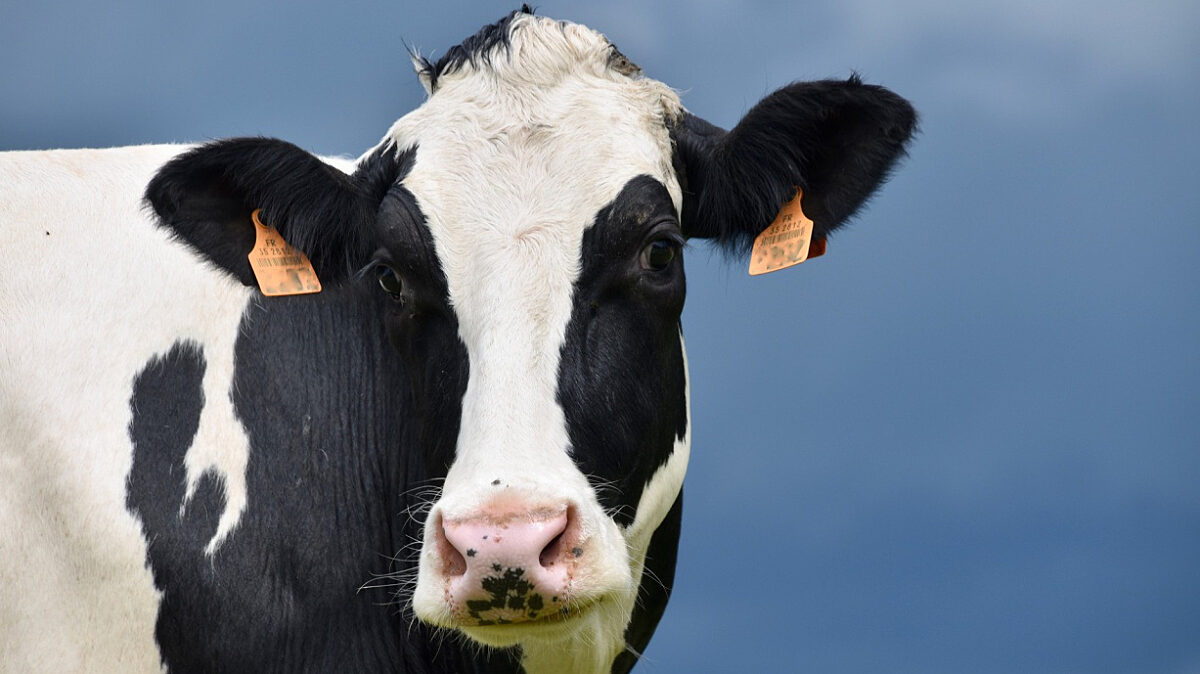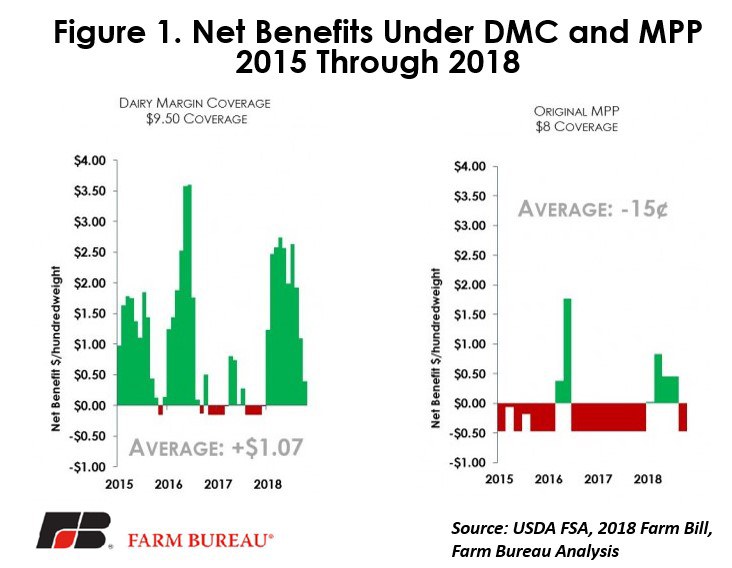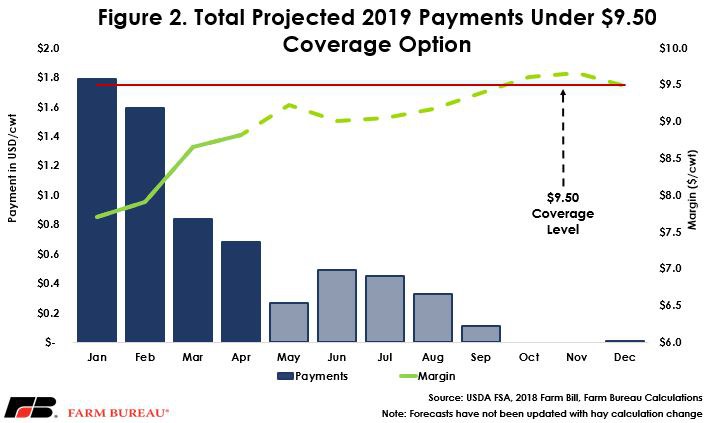Reviewing Projected Payments Under Dairy Margin Coverage
TOPICS
USDAMichael Nepveux
Former AFBF Economist

photo credit: AFBF
Michael Nepveux
Former AFBF Economist
Signup began earlier this week for the Dairy Margin Coverage program, the 2018 farm bill’s replacement for the Margin Protection Program. Market Intel already conducted an in-depth review of DMC, but it is helpful to provide a brief overview of the program.
An improvement on MPP, DMC is a voluntary program that makes payments when the national average income-over-feed-cost margin falls below a farmer-selected coverage level. Coverage is available from $4 per hundredweight to as high as $9.50 per hundredweight, and dairy producers pay premiums for coverage. Program payments may be triggered monthly and are made if the DMC margin falls below the farmer’s elected coverage level. Program payments are based on the amount of milk covered in the program and may range from 5% to 95% of a farm’s milk production history in 5% increments. The program has two tiers; Tier I covers up to 5 million pounds and has more affordable premiums than Tier II, which covers any milk over the first 5 million pounds. A farmer can enroll milk in Tier II at a different coverage level than Tier I. When a farm enrolls in DMC they may receive a 25% premium discount if they make a one-time election for both the coverage level and the amount of milk enrolled in the program.
Many farmers wonder how DMC would have performed had it been in effect in recent years. Figure 1 compares net benefits, i.e., program payments minus premiums from the new DMC $9.50 coverage level to the maximum $8 coverage level under MPP for Tier 1 coverage only.

Income-Over-Feed-Cost Margin
The national average income-over-feed-cost margin is calculated in two steps using various feed ingredient prices and milk prices:
- Composite Feed Cost = (Corn Price X 1.0728) + (SBM X 0.00735) +(0.0137 X Alfalfa Hay Price)
- Milk Margin = All-Milk Price – Composite Feed Cost
This margin is what is compared to the farmer’s elected coverage level in order to determine whether or not payments under DMC are made. So far, USDA’s Farm Service Agency has announced four months’ worth of income-over-feed-cost margins for 2019, as well as the corresponding feed ingredient and milk prices.

So far for 2019, payments under DMC are triggered in each of the four months at the $9.00 and $9.50 coverage levels. Essentially, if a dairy farmer had elected to cover milk under the $9.50 level for Tier I, they would have already triggered payments of $1.79/cwt for January, $1.59/cwt for February, 84 cents/cwt for March and 68 cents/cwt for April. As an exercise, let us assume that every dairy farm enrolled in 2018 elected for $9.50 coverage on their first 5 million pounds of milk under Tier I, or all of their milk if they produced under 5 million pounds. USDA’s DMC decision support tool gives us forecasted income-over-feed-cost margins for the rest of the year (as of June 20, these projections are updated daily). Using USDA’s reported margins so far for 2019 and the support tool’s forecasted margins, Figure 2 shows what the resulting government payments would be for 2019.

Payments will be made for each of the first four months of 2019, and are expected to be made for May through September and again in December. The payments are expected to decline throughout the year as the projected income-over-feed-cost margin increases. As of today, only two months are projected to have margins over the $9.50 coverage level and not trigger any payments – but these projections do not include the hay price adjustment which has boosted payments by 14 cents to 31 cents.
Hay Price Calculation Gets an Adjustment
USDA also updated a major component in the feed cost margin formula: hay prices. The old MPP formula did not accurately reflect real-world dairy feeding rations when calculating the cost of alfalfa used in the income-over-feed-cost margin. The department built in a 50% blend of premium and supreme alfalfa hay prices into the original alfalfa hay price used in the prior calculation. This adjustment more closely aligns with rations that dairy producers are actually feeding their cows and more accurately reflects the cost of including top-quality alfalfa in feed.

Given that the payments associated with covering 5 million pounds of milk at the $9.50 coverage level under Tier I are already more than enough to cover the annual premium, it would make sense for producers to enroll at this level.
Top Issues
VIEW ALL